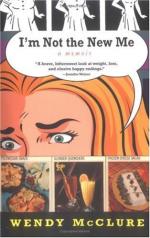Robert Lang Wilson was born in Pennsylvania in 1805. In 1831 he went to Kentucky; in 1833 removed to Sangamon County, Illinois; in 1836 was elected to the Illinois House. He removed to Sterling, Illinois, in 1840, and died there in 1880. For some years he was paymaster in the United States Army.
John Dawson was born in Virginia in 1791; he removed to Sangamon County, Illinois, in 1827. He was elected to the lower house of the legislature in 1830, 1834, 1836, 1838, and 1846. He was a member of the constitutional convention of 1847. He died November 12, 1850.
The other members of the “Long Nine” were Abraham Lincoln, Daniel Stone, Andrew McCormick, and Arthur Herndon.]
LINCOLN IN THE TENTH ASSEMBLY OF ILLINOIS
In December Lincoln put away his surveying instruments to go to Vandalia for the opening session of the Tenth Assembly. Larger by fifty members than its predecessor, this body was as much superior in intellect as in numbers. It included among its members a future President of the United States, a future candidate for the same high office, six future United States Senators, eight future members of the National House of Representatives, a future Secretary of the Interior, and three future Judges of the State Supreme Court. Here sat side by side Abraham Lincoln and Stephen A. Douglas; Edward Dickinson Baker, who represented at different times the States of Illinois and Oregon in the national councils; O.H. Browning, a prospective senator and future cabinet officer, and William L.D. Ewing, who had just served in the senate; John Logan, father of the late General John A. Logan; Robert M. Cullom, father of Senator Shelby M. Cullom; John A. McClernand, afterward member of Congress for many years, and a distinguished general in the late Civil War; and many others of national repute.[2]
[Illustration: Elijah Parish Lovejoy.
From a silhouette loaned by Mr. Owen Lovejoy of Princeton, Illinois. Elijah Lovejoy was born in Maine in 1802. When twenty-five years old he emigrated to St. Louis, where he at first did journalistic work on a Whig newspaper. In 1833 he entered the ministry, and was soon after made editor of a religious newspaper, the “St. Louis Observer.” Mr. Lovejoy began, in 1835, to turn his paper against slavery, but the opposition he found in Missouri was so strong that in the summer of 1836 he decided to move his paper to Alton, Illinois. Before he could get his plant out of St. Louis a mob destroyed the greater part. The remainder he succeeded in getting to Alton, but a mob met it there and threw it into the river. The citizens of Alton, ashamed of this act, gave Mr. Lovejoy money to buy a new press. At first the tone of the paper was moderate, but gradually it grew more emphatic in its utterances against slavery. The pro-slavery element of the town protested, indignation




